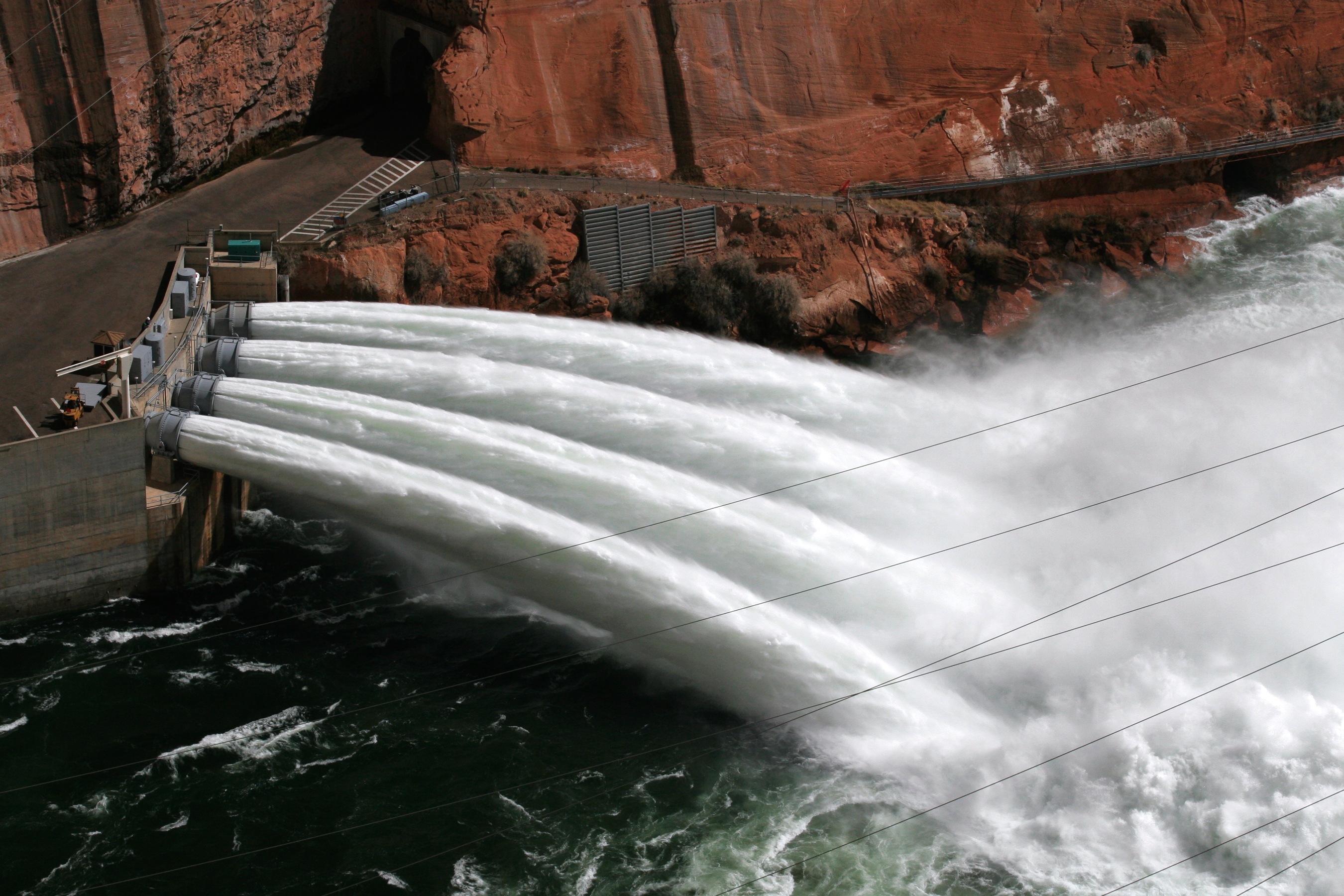
Grand Canyon Flood Underway to Rebuild Beaches

The Colorado River cascaded in a flood from the Glen Canyon Dam today, the first step in an ongoing experiment to rebuild beaches and fish habitat in the iconic Grand Canyon.
Interior Secretary Ken Salazar opened the dam's bypass tubes at noon Mountain Time, releasing a spectacular display of gushing water. The six-day flood started ramping up Sunday night (Nov. 18) at 11 p.m. MT, and the peak-flow of 42,000 cubic feet (1,189 cubic meters) per second is scheduled to last from 9 p.m. tonight through 10 p.m. on Tuesday, according to a statement from the Bureau of Reclamation.
"This is truly an historic milestone for the Colorado River, Grand Canyon National Park, and the United States Bureau of Reclamation," Salazar said. "This new protocol developed by Reclamation will protect both the Grand Canyon and the delivery of water for communities, agriculture and industry," he said.
The water release from Glen Canyon Dam is the first of many simulated floods planned by the Department of the Interior through 2020. The floods, or "high-flows," are an effort to restore the river's natural environment for both tourists and wildlife in the Grand Canyon.
"These high-flow releases, a new paradigm in water management, recognize that there are hugely beneficial impacts to river ecology from releasing the requisite water needed downstream in large pulses, rather than uniformly throughout the year," said U.S. Geological Survey Director Marcia McNutt.
Officials hope to deposit sediment high along the walls of the Grand Canyon, away from the river's reach at lower water levels. Before Glen Canyon Dam's completion in 1966, the Colorado River supplied more than 90 percent of the sediment forming the canyon's beaches and sandbars, popular stops for tourists and river rafters.
Currently, sand and mud piles up behind the dam and natural beaches and sandbars have disappeared, allowing predatory non-native fish such as rainbow trout to flourish.
Sign up for the Live Science daily newsletter now
Get the world’s most fascinating discoveries delivered straight to your inbox.
Vegetation, once buried or ripped away during periodic floods, now grows over riverside camping sites. And the National Park Service believes erosion threatens some archaeological sites.
Follow OurAmazingPlanet on Twitter @OAPlanet. We're also on Facebook and Google+.










